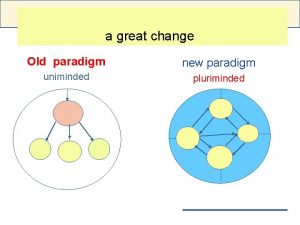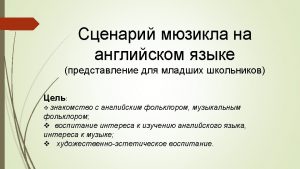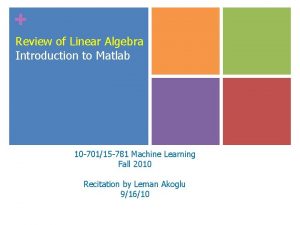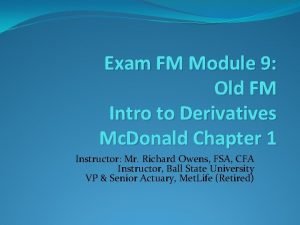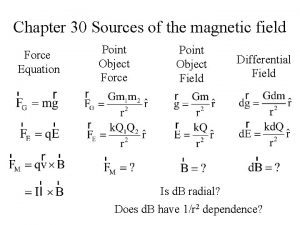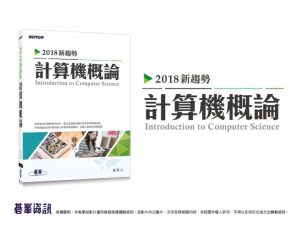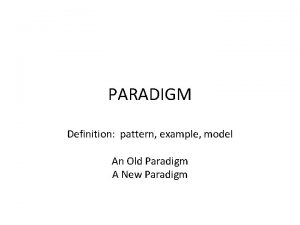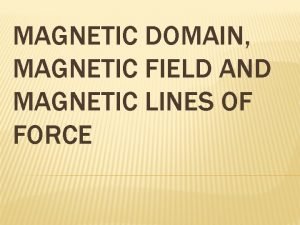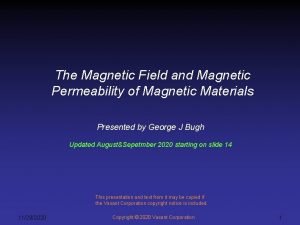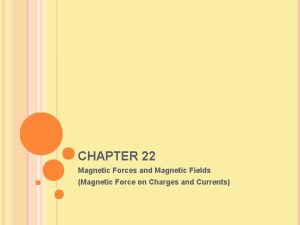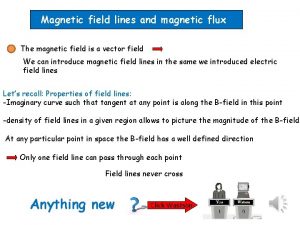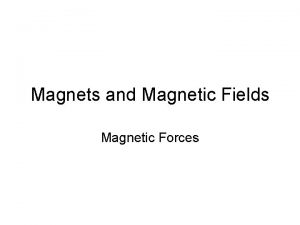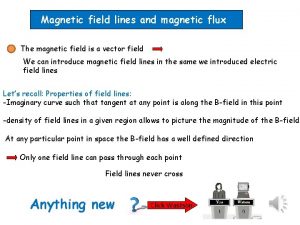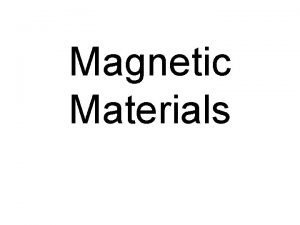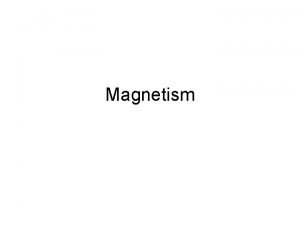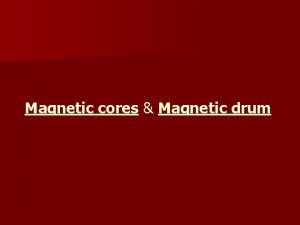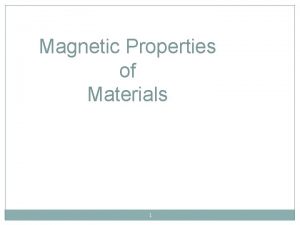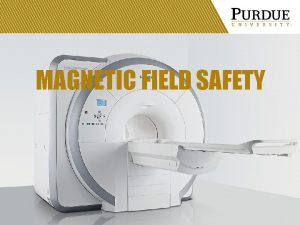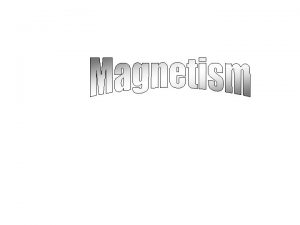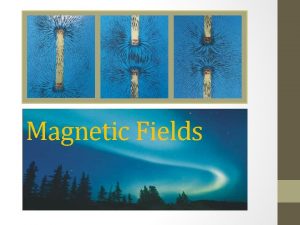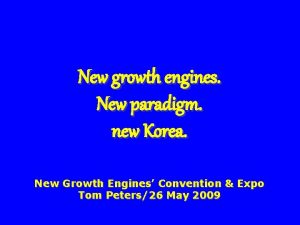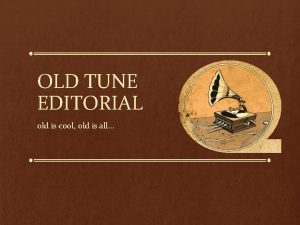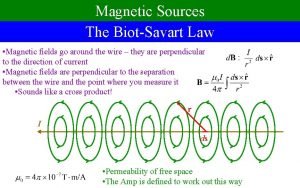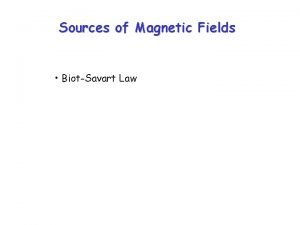Old Law and a New Paradigm in Magnetic


















![MRI agar Relative image intensity [a. u. ] agar + Gd 1. 2 m. MRI agar Relative image intensity [a. u. ] agar + Gd 1. 2 m.](https://slidetodoc.com/presentation_image/2eabaf280a3e2c31ef82ea32d988184a/image-19.jpg)








- Slides: 27

Old Law and a New Paradigm in Magnetic Resonance Imaging Thermometry Janusz H. Hankiewicz UCCS Center for Bio. Frontiers Institute National Institute of Standards and Technology, Boulder, CO MRX Analytics PBC, Colorado Springs, CO jhankiew@uccs. edu WSU; 04/12/2017 1

Outline q Motivation and background q Review of MRI thermometry q Magnetic particles as MRI temperature contrast agent • • approaches metallic particles iron oxide based particles (ferrites) other materials q Summary, acknowledgements, questions, etc WSU; 04/12/2017 2

Motivation and background Determination of tissue temperature deep in the body is important in various medical diagnoses and interventional procedures Diagnoses • To detect tumors typically are 0. 5 to 1. 5 degree warmer than nearby tissues • To pinpoint inflammation sites In MRI guided thermal ablation procedures; to prevent overheating and damage of adjacent healthy tissue Destruction of tumors and neuron connections by thermocoagulation • Focused ultrasound (FUS, HIFU) • Radio-frequency • Laser $$$ WSU; 04/12/2017 3

How thermometry is done • Issues: § One point measurement § Invasive § Use poisonous components (Hg) § Only surface measurement § How and where to measure WSU; 04/12/2017 4

MRI thermometry (t. MRI) Allows for non-invasive and in-vivo 3 D temperature maps deep in the human body $10+$2, 000=? Rieke, 2008, Magn. Reson. Imaging 27; 376 Turner, 2012, Magn. Reson. Mater. Phys. Biol. Med. 25; 1 Winter, 2016, Journal of Hyperthermia 32; 63 WSU; 04/12/2017 5

t. MRI Measurements • absolute • relative MRI temperature contrast • endogenous inherent properties; truly non-invasive • exogenous external agents; invasive, need administration WSU; 04/12/2017 6

Endogenous temperature contrast • WSU; 04/12/2017 7

Proton Resonance Frequency (PRF) Current gold standard for non-invasive determination of temperature changes Mechanism: electron shielding more effective at high temperature Temperature frequency shift leads to phase shift 10 -8/o. C; 0. 6 Hz/o. C @ 1. 5 T Known issues: • Motion (cardiac or inhalation) • Adipose tissue (lipids do not have temperature change of chemical shift) • Bones (poor signal-noise) • Magnetic field inhomogeneity • Magnetic field drift WSU; 04/12/2017 Hindman, 1966, Proton resonance shift of water in gas 8 and liquid states. J Chem Phys. 44; 4582

Exogenous contrasts agents qparamagnetic lanthanide complexes q spin transition molecules qparamagnetic thermo-sensitive liposomes (with Gd or Mn) Allows for absolute temperature measurements! gel-to-liquid crystalline phase transition temperature (Tm) water exchange at Tm Phospholipid membrane Mn 1 H WSU; 04/12/2017 9

Curie’s Law WSU; 04/12/2017 10

Hypothesis Magnetic particles embedded in, or near, the tissue will create a temperature-dependent local dipole magnetic field Bd(T) that will modulate the homogeneity of the static magnetic field B 0 The effect can be measured directly as NMR linewidth broadening The effect can also be visible as a darker area on magnetic MR image acquired with the gradient echo method To test use Gd Phase transition from the ferromagnetic to a paramagnetic state at 19 o. C WSU; 04/12/2017 11

How do MPs effect NMR line? full width at half maximum (FWHM) no MPs with MPs WSU; 04/12/2017 12 Temperature dependent dipole field from MPs broadens NMR line

Sample • Made by mechanical method – irregular shape dust – median size: 4. 8 ± 2. 7 mm • SEM and SQUID: dry powder • NMR and MRI: particles suspended in 1% agar. Ringer’s solution* gel and placed in 5 mm glass (NMR) and 10 mm plastic tubes (MRI) *Ringer’s solution (6. 5 g Na. Cl, 0. 42 g KCl, 0. 25 g Ca. Cl 2 and 0. 2 g of Na. HCO 3 dissolved in 1 liter of distilled water): - to create an isotonic solution similar to the bodily fluids in animal WSU; 04/12/2017 13

SQUID Superconductive Quantum Interference Device High field SQUID Low field SQUID Mean field theory for bulk materials WSU; 04/12/2017 external field exchange field 14

NMR 364 m. T pulsed nuclear magnetic resonance (NMR) spectrometer To measure NMR line width and nuclear relaxation times T 1 and T 2 ( FWHM in agar gel with suspended Gd particles)- (FWHM in pure agar gel) WSU; 04/12/2017 15

MRI 1. 5 T, 30 cm bore preclinical Agilent MRI at NIST, Boulder, CO Temperature cell WSU; 04/12/2017 coolant- proton-less perfluorocarbon liquid (Fluorinert, FC-40) 16

MRI 2. 75 m. M/L of Gd in Ringer’s solution pure agar gel (reference) agar gel with Gd Imaging parameters: Objects are 10 mm across Method: gradient echo FOV=3 x 3 cm matrix 64 slice thickness=3 mm TE=2. 5 ms, TR=5. 0 s WSU; 04/12/2017 Estimated accuracy: 17

Engineering Gd particles To obtain monodisperse magnetic particles Photolithography with deposition by magnetron sputtering silicon wafer + sacrificial layer + photoresist + mask + target (Gd) OD=6 mm, H=2 mm after deposition SEM WSU; 04/12/2017 after harvesting AFM SEM SQUID 18
![MRI agar Relative image intensity a u agar Gd 1 2 m MRI agar Relative image intensity [a. u. ] agar + Gd 1. 2 m.](https://slidetodoc.com/presentation_image/2eabaf280a3e2c31ef82ea32d988184a/image-19.jpg)
MRI agar Relative image intensity [a. u. ] agar + Gd 1. 2 m. M/L 1. 2 m. M 0. 6 m. M 0. 3 m. M 3 2 1 0 5. 1 10. 0 14. 8 20. 1 25. 2 30. 0 35. 0 40. 0 45. 3 49. 6 Temperature [o. C] WSU; 04/12/2017 19

Ferrites story Bio-compatibility of +3 Gd based materials is questionable; Gd deposition in the brain following repeated use of Gd containing MRI contrast agents How about iron oxide based compounds? • Some are already accepted by FDA for humans as supplements • Mixed ferrites are easy to fabricate (sintering sub-mm, chemical reduction nm) • Composition changes TC WSU; 04/12/2017 20

X=0. 60, 0. 65, 0. 68, 0. 70, 0. 73, 0. 76 (size 500 nm) WSU; 04/12/2017 21

WSU; 04/12/2017 22

This is work in progress … § Other technologies § homogenous alloy particles with Fe, Co, Cu, Ni (stainless-steel, Permalloy) § structured particles with a compensation temperature § Increase sensitivity; by steep M(t) § How to calibrate line width or image intensity into temperature? § line width, image intensity =f(t, MP concentration, Bo) § § Particle size; should be of approx. 50 nm for easy delivery by IV Toxicity and stability (coating with noble metal, dextran, . ? . ) Commercialization (bio-med, material science) Etc, etc… WSU; 04/12/2017 23

Summary MRI thermometry possible by using magnetic particles made of: o Metals (Gd) o Oxides (ferrites) o alloys o heterogeneous structures Range: 5 o. C – 50 o. C Accuracy: ± 1 o. C WSU; 04/12/2017 24

Acknowledgements • • • • Dr. R. Camley - theory Dr. Z. Celinski - technology Dr. Nick Anderson – theory Dr. K. Stupic – MRI Dr. K. Tvrdy – technology Dr. M. Przybylski – Mössbauer spectroscopy J. Nobles – photolithography N. Hammelev – SQUID and NMR J. Stroud - SQUID and NMR N. Alghamdi – ferrites technology J. Stoll – ferrites technology N. Christian - SEM V. Kravets - AFM A. Ballast - particle sizing K. Smiley - NMR and parts fabrication J. Baptist - MRI warming cell fabrication v v v State of Colorado 2014 Bioscience Discovery Evaluation Grant (14 BGF- 22) NSF i. Corps National Institute of Standards and Technology, Boulder, CO Argonne National Laboratory Mayo Clinic, Rochester, MN WSU; 04/12/2017 25

WSU; 04/12/2017 26

Thank you!!! WSU; 04/12/2017 27
 Old paradigm vs new paradigm examples
Old paradigm vs new paradigm examples Remanent magnetization
Remanent magnetization Permeability unit
Permeability unit Magnetic moment and magnetic field relation
Magnetic moment and magnetic field relation Magnetic force particle
Magnetic force particle Newton's first law and second law and third law
Newton's first law and second law and third law Newton's first law and second law and third law
Newton's first law and second law and third law New-old approach to creating new ventures
New-old approach to creating new ventures Njbta
Njbta New paradigm leadership
New paradigm leadership New paradigm leadership
New paradigm leadership Diestel graph theory
Diestel graph theory Once upon a time there lived an old man with his wife
Once upon a time there lived an old man with his wife Once upon a time there lived an old man and an old woman
Once upon a time there lived an old man and an old woman Boyle's law charles law avogadro's law
Boyle's law charles law avogadro's law Boyle's law charles law avogadro's law
Boyle's law charles law avogadro's law How old is she
How old is she Once upon a time there lived a father
Once upon a time there lived a father What is the difference between the old and new covenant
What is the difference between the old and new covenant Conventional software engineering
Conventional software engineering Old man and new man
Old man and new man New concept chapter 2
New concept chapter 2 Linearly independen
Linearly independen Module 9 old and new
Module 9 old and new Old imperialism vs new imperialism chart
Old imperialism vs new imperialism chart The old and young prophet
The old and young prophet Magnetic field due to a curved wire segment
Magnetic field due to a curved wire segment Paradigms and principles 7 habits
Paradigms and principles 7 habits
